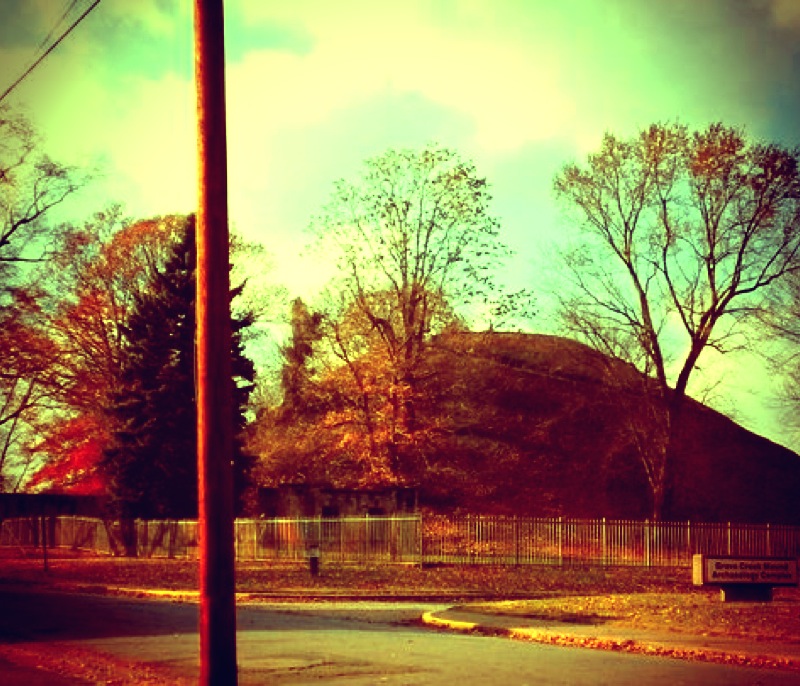Doin’ Hard Time: A Visit to the [Haunted] West Virginia State Penitentiary
This past week, I visited my hometown of Wheeling, West Virginia. When I was a kid, I remember visiting the then-functioning state penitentiary just a few miles south down the Ohio River. Oddly, the warden had no problem giving two nine-year-old girls a tour through an occupied prison, unaccompanied by their parents. Inmates in the lowest-security section were roaming around the hall, cells open, watching television in bathrobes and slippers.
North Hall exercise area, former site of the so-called “Death House”
Even in retrospect, that whole experience seemed pretty surreal, so there was little I could do to resist the urge to take a more formal tour of the now decommissioned pen. The day of my second visit was gloomy and wet, befitting an institution which had been closed due to a court ruling stating living conditions were too inhumane even for convicted felons.
The building was divided into four separate sections:
- North Hall, aka “The Alamo,” where the men whose behavior on the inside earned them 22 to 24 hours of incarceration within a 5x7-foot cell.
- New Wall contained the “mainline,” everyday assortment of convicts.
- “Rat Row” held the rats and snitches, who had testified against their own peers in trials and thereby earned special protection and a separate exercise area in the yard.
- “Honor Hall” was inhabited by the so-called “trustees,” who were the polar opposite of The Alamo’s residents; their behavior on the inside earned them special privileges and decreased security.
The guide told me that the trustees were the last inmates to be removed from the premises, so it’s my understanding that some of the ‘special privileges’ they earned included the bath robes, slippers, television viewing and unlocked cells I’d witnessed during my first visit as a youngster.
Dining area in The Alamo. Please note the chain link fence above and surrounding the quarters.
The penitentiary was established in 1866, and continued housing inmates until 1995 (my aforementioned visit was in 1994 in the midst of the prison’s decommissioning). At the time of its closing, 653 inmates were housed and guarded by a staff of 32 employees. The walls in several of the common areas feature murals painted by three inmates (plus the color-mixing help of a fourth, due to one painter’s colorblindness).
Beyond your average beatings and shankings, the pen has a pretty bloody undercurrent running throughout its history. For one, Charles Manson once petitioned to be relocated to the West Virginia State Penitentiary. His hand-written letter remains on display in the electric chair/shanking/news clipping area of the tour. Then, on New Year’s Day in 1986, a planned riot took place. Ultimately the governor was called in to negotiate a settlement (the inhabitants got a new cafeteria!), but not before three snitches were executed at the hands of their fellow inmates. In 1992, three men managed to tunnel out via the greenhouse in the prison yard; this was terrifying to me as a child living in the area at the time, and I was 100% certain they were coming for me.
Over the years, 93 men from the pen were executed for their crimes: 83 by hanging and 9 by electrocution. Those who were hanged proceeded up the so-called Death House’s 13 stairs and slipped their heads through a noose with 13 knots (both symbolic of the judge and each member of the jury). All hangings were public until 1931, when the man being executed was decapitated during the hanging process! From then on, all executions were “by invitation only:” the inmate’s family, family of the victim, media, clergy, coroner.
The Wagon Gate, the prison’s oldest building, dates to 1866 and displays a mock hanging scene.
When West Virginia reinstated capital punishment in 1951, a fellow inmate was commissioned to build the penitentiary’s electric chair, “Old Sparky.” For obvious reasons, this gentleman joined the ranks of the rats & snitches and had to go into protective custody within the prison.
Three switches providing current to the chair were installed. The electrician who performed the day-before check of the wiring put one hot/two dead, so as to give the guards a 2 out of 3 chance of not throwing the responsible switch.
Obviously, this place has its fair share of ghosts and demons, literal and figurative. Visitors have reported seeing the “Shadow Man,” a static-y silhouette of a figure that roams the entire prison grounds, along with spirits from prison guards and inmates past.
Compounding its already shady history, the penitentiary was built on the leveled grounds of the Adena Native American tribe’s sacred burial site. Yeah yeah… I know lots of places are purportedly located as such, but this situation is different: located directly across the street from the central, administrative tower of the prison is the Grave Creek Mound Archaeological Complex, featuring the only eponymous mound remaining in the town of Moundsville.

Great to visit. Bad juju.






Follow us on Twitter to get the latest on the world's hidden wonders.
Like us on Facebook to get the latest on the world's hidden wonders.
Follow us on Twitter Like us on Facebook